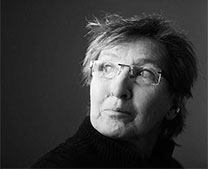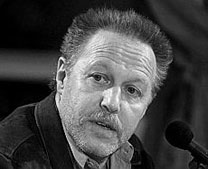


Viesturs Kairiss: Pelican in the Desert
This new film by Latvian film and opera director Kairiss will have its international premiere tomorrow at Visions du Réel in Nyon. Here is an article I wrote for the promotion of the film:
The first film work I met from the hands of Viesturs Kairiss was ”Romeo and Juliet” (2004). A wonderful original short documentary, or as it has been named ”a documentary musical”, where two deaf youngsters perform the staging of Bernstein’s ”West Side Story”. It has since then been one of my first choices, when I have had the privilege to make retrospectives of Baltic documentary cinema for international festivals.
I learned that Kairiss already from the late 1990’es worked as a theatre and opera director and in that field now has developed into an often used director internationally with a special fame for his Wagner opera settings. His way of working in opera was interpreted freely and with a lot of inspiration by his colleague Davis Simanis, a soul brother in Latvian documentary. The film was ”Valkyrie Limited” (2009), a masterpiece overseen by international festivals. Simanis has worked with Kairiss as editor in several of his films, including the features.
Kariss is an opera director who also makes films, and tries to
combine the two art forms… Well, you could say so, when you look at his ”Lohengrin from Varka Crew” (2009) that has Wagner in the title in a film, where the protagonist is a sportsman with the mission to help people on this earth, and you can indeed sense the opera director in ”Pelican in the Desert”, the new grandiose work of the directorand – that credit must be given up front in this article – Gints Berzins, the cameraman whose images are magnificent. Nothing less!
Latgale
The film opens with an informative text about the mysterious, spiritual place that the director and cameraman take us: Latgale is a land lying at the furthest point of the European Union’s Eastern border… and is continued by a text that gives an idea of how this place is to experienced in the film: At times it seems to be an island surrounded by water, yet at times this land reminds of a desert, which has covered the Ark carrying the salvaged humanity…
Voila! Untergang! Doomsday – and there is a preacher in the film, who foresees that this is the way it goes.
And (almost, comes below) no more written text, actually there are relatively few words uttered in this mythical journey to people and faith, performed by mostly old representatives of a society and culture that seem to disappear.
The Visual Flow
The film literally takes off with a flying over water, images that come back as a kind of chaptering. Between sequences that have a focus on bringing a beautiful combination of image and sound. A woman singing a prayer, the sound (and image) of water, a man painting a crucifix, another man washing himself in mud… this is not an anthropological film, there is no instisting on giving information, nevertheless, through the people who take part, the audience is invited to know more about Latgale.
The Jews
An example – quoting one more text from the screen: An old Jewish tale tells that a pelican cut open its breast with the beak and fed his hungry young with its own blood. Followed by long silent passages, a shift in season to winter, a man who is saying that there were many Jews here, today there are none, to be followed by a visit to a house, where a woman tells that this used to be a synagogue, calling for grandpa in the sofa to stand up and play his accordeon. He does, and he does well, she continues by saying that this is a holy place, and the film makes it a holy atmosphere the moment, where she starts to sing. To mention just one of many magic poetic moments in the film.
The Building of the Story
Well, you can not really talk about ”story” in the way it is often used in modern documentary discussions. More about an associative editing where death follows the sequence about the Jews, to the cemetery, to a woman in summer time chasing her dog to catch it and take it back, and then winter again, where a man takes his teeth out of the mouth and gives a concert with tongue and nose. Hilarious. But also – the whole film is like that – respectful to the people. No easy making fun, the man continues to play on abandoned iron rails outside the wooden house, which turns out to be a church.
Prayers
Many church houses are visited and many prayers and chants are heard. It is a multi-layered film with an emphasis on religious rituals and their believers and priests and preachers. The interiors of the churches are described, the huge catholic processions as well as the fascinating entry to the place of an old believer, who tells about where and how he baptizes children as well as grown-ups – and gets interrupted by a call on his cellphone! For whom the bells toll – beautiful are the many sequences where old women draw the ropes that brings the bells to perform music.
No Future
Latgale seems to have no future, is what the film communicates. A brilliant montage brings that kind of feeling. Four men in the snow are digging a grave, the sound of their shovels accompany Mahler music, women are dancing to this sound score, with and without cowboy hats, cut to empty abandoned houses, stones, mountains, yes, there is a desert, and then back to the four men, the dead body… I have not given the scenes in their right order but the death is there, also in the tragic accident that a man describes he witnessed next to a ruin, a burnt down house.
No message but experience and a hymn to spirituality, sometimes solemn, always letting the dignity of the people come forward whatever mad or weird they might appear. Kairiss did not go there to inform, he went there to experience. He was impressed, he saw an operalike drama or an elegy, if you like. He dwelled like another Visconti on the decadence of the decline. He went with his superb cameraman Berzins to convey this inspiration in an observational, expressionistic film language of super-aesthetic sequences. What more could you ask for?
Latvia, 2014, 70 mins.